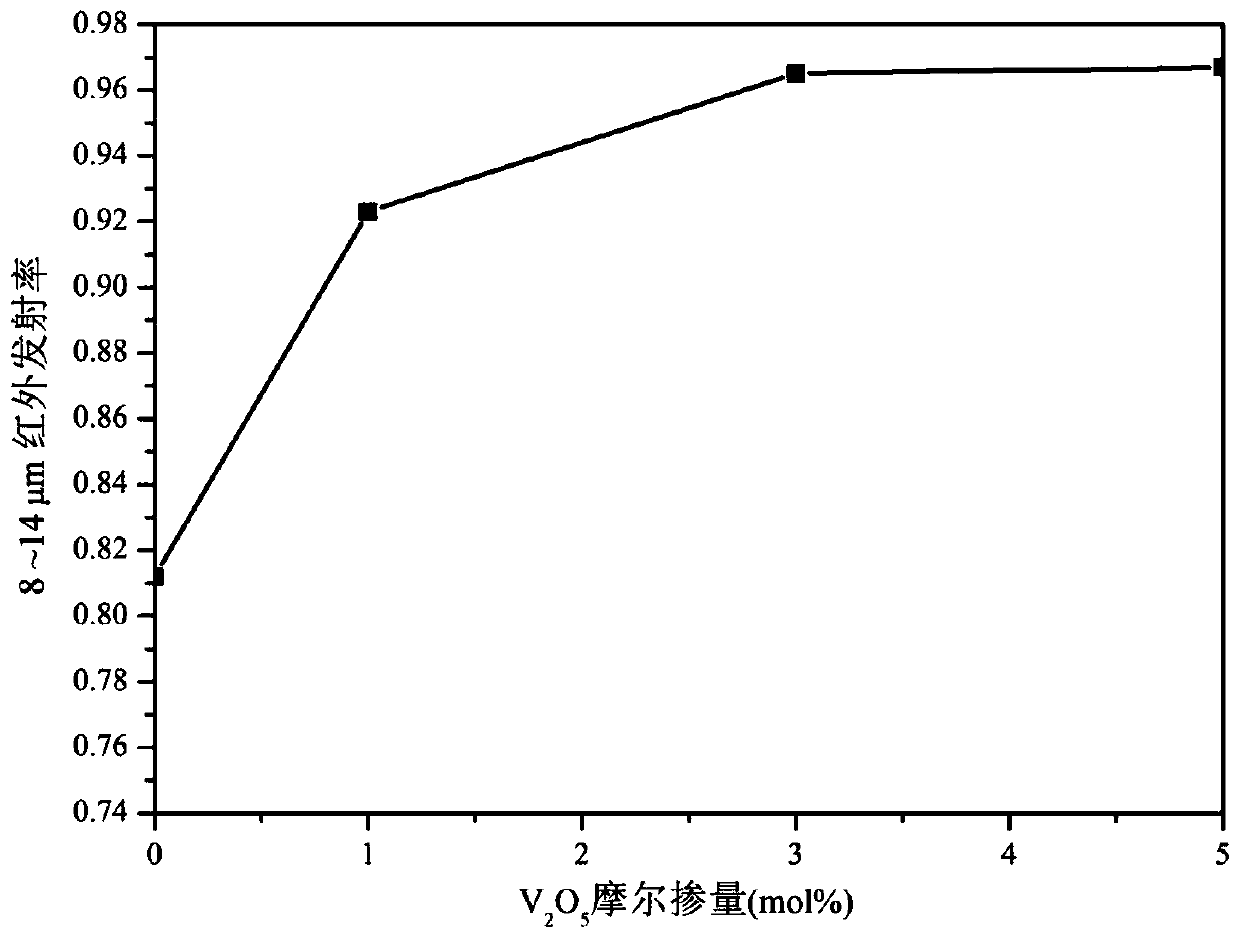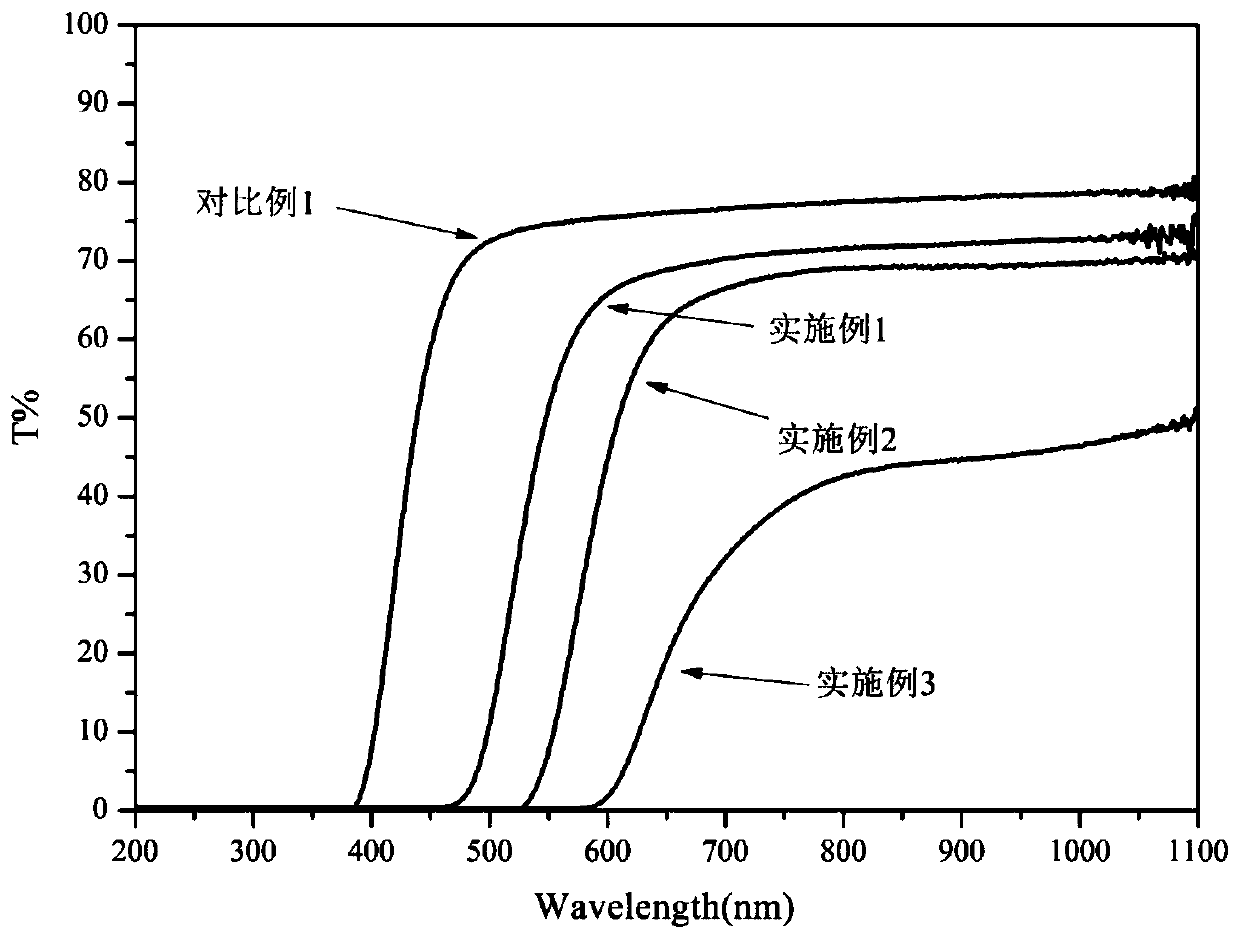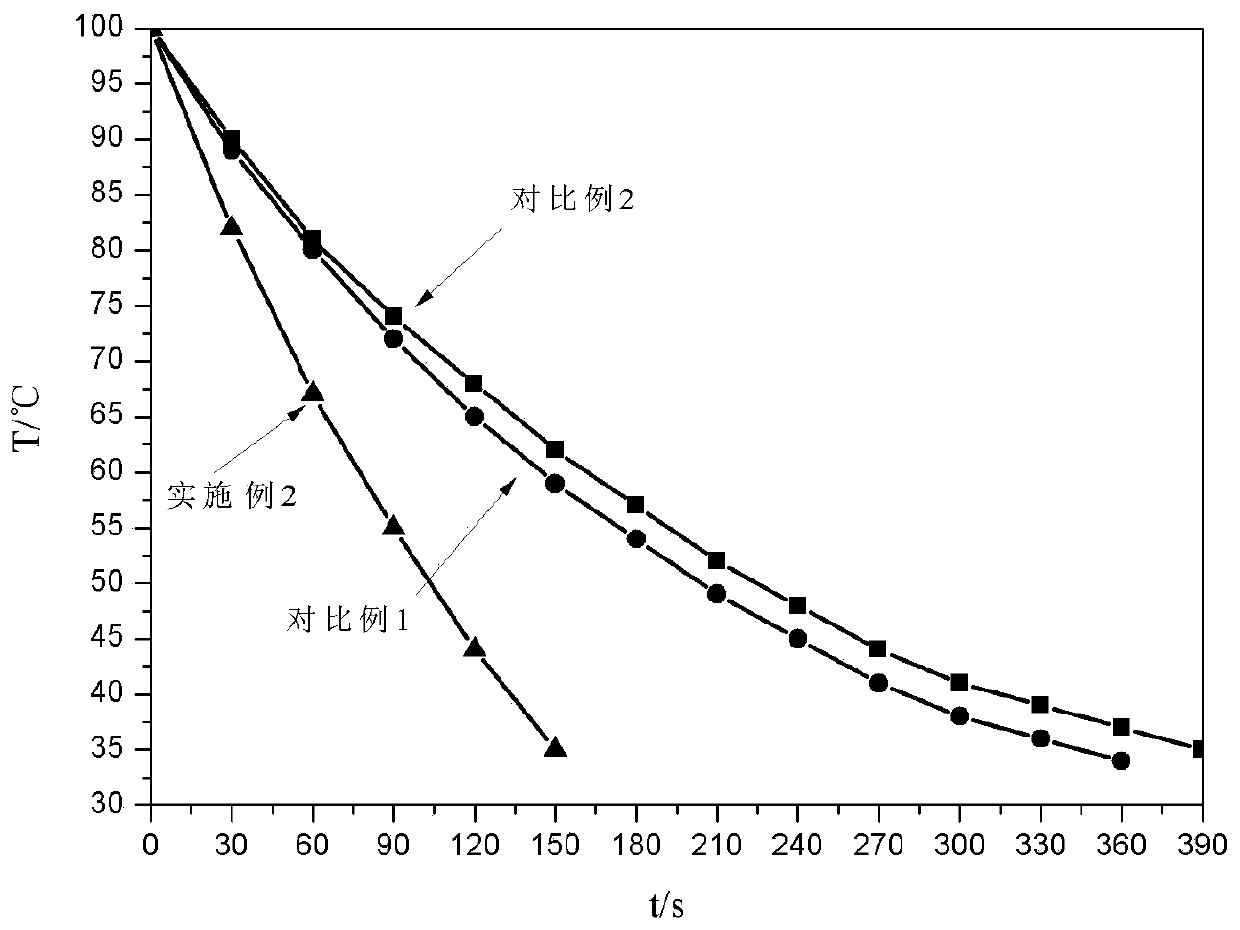Heat dissipation glass with low melting point and high infrared emissivity, and preparation method thereof
A technology of infrared emissivity and low melting point, applied in glass manufacturing equipment, glass furnace equipment, manufacturing tools, etc., can solve the problems of low thermal conductivity and counteraction, and achieve low melting point, lower melting temperature, and simple and easy process. Effect
- Summary
- Abstract
- Description
- Claims
- Application Information
AI Technical Summary
Problems solved by technology
Method used
Image
Examples
Embodiment 1
[0034] The glass sample of the present embodiment, by mole percentage, comprises following components:
[0035]
[0036] (1) Take each required composition raw material respectively by molar percentage;
[0037] (2) Grind and mix the raw materials in an agate mortar, put them into a corundum crucible, and calcine at 850°C for 30 minutes to completely melt the powder mixture. It is not necessary to carry out under the protection of the atmosphere when melting at high temperature. Can be carried out in the air;
[0038] (3) Pour the material in the molten state into the graphite mold preheated in advance in the muffle furnace, and perform stress relief annealing treatment at 300 ° C for 3 hours, and then cool to room temperature with the furnace;
[0039] (4) Take out the sample from the mold, then grind the sample into a disc glass with a radius of 30 mm and a thickness of 3 mm, and then polish it with a diamond micropowder solution until the surface of the block glass is m...
Embodiment 2
[0042] The glass sample of the present embodiment, by mole percentage, comprises following components:
[0043]
[0044] (1) Take each required composition raw material respectively by molar percentage;
[0045] (2) Grind and mix the raw materials in an agate mortar, put them into a corundum crucible, and calcine at 850°C for 30 minutes to completely melt the powder mixture. It is not necessary to carry out under the protection of the atmosphere when melting at high temperature. Can be carried out in the air;
[0046] (3) Pour the material in the molten state into the graphite mold preheated in advance in the muffle furnace, and perform stress relief annealing treatment at 300 ° C for 3 hours, and then cool to room temperature with the furnace;
[0047] (4) Take out the sample from the mold, then grind the sample into a disc glass with a radius of 30 mm and a thickness of 3 mm, and then polish it with a diamond micropowder solution until the surface of the block glass is m...
Embodiment 3
[0050] The glass sample of the present embodiment, by mole percentage, comprises following components:
[0051]
[0052] (1) Take each required composition raw material respectively by molar percentage;
[0053] (2) Grind and mix the raw materials in an agate mortar, put them into a corundum crucible, and calcine at 850°C for 30 minutes to completely melt the powder mixture. It is not necessary to carry out under the protection of the atmosphere when melting at high temperature. Can be carried out in the air;
[0054] (3) Pour the material in the molten state into the graphite mold preheated in advance in the muffle furnace, and perform stress relief annealing treatment at 300 ° C for 3 hours, and then cool to room temperature with the furnace;
[0055] (4) Take out the sample from the mold, then grind the sample into a disc glass with a radius of 30 mm and a thickness of 3 mm, and then polish it with a diamond micropowder solution until the surface of the block glass is m...
PUM
| Property | Measurement | Unit |
|---|---|---|
| emissivity | aaaaa | aaaaa |
| emissivity | aaaaa | aaaaa |
Abstract
Description
Claims
Application Information
 Login to View More
Login to View More - R&D
- Intellectual Property
- Life Sciences
- Materials
- Tech Scout
- Unparalleled Data Quality
- Higher Quality Content
- 60% Fewer Hallucinations
Browse by: Latest US Patents, China's latest patents, Technical Efficacy Thesaurus, Application Domain, Technology Topic, Popular Technical Reports.
© 2025 PatSnap. All rights reserved.Legal|Privacy policy|Modern Slavery Act Transparency Statement|Sitemap|About US| Contact US: help@patsnap.com



